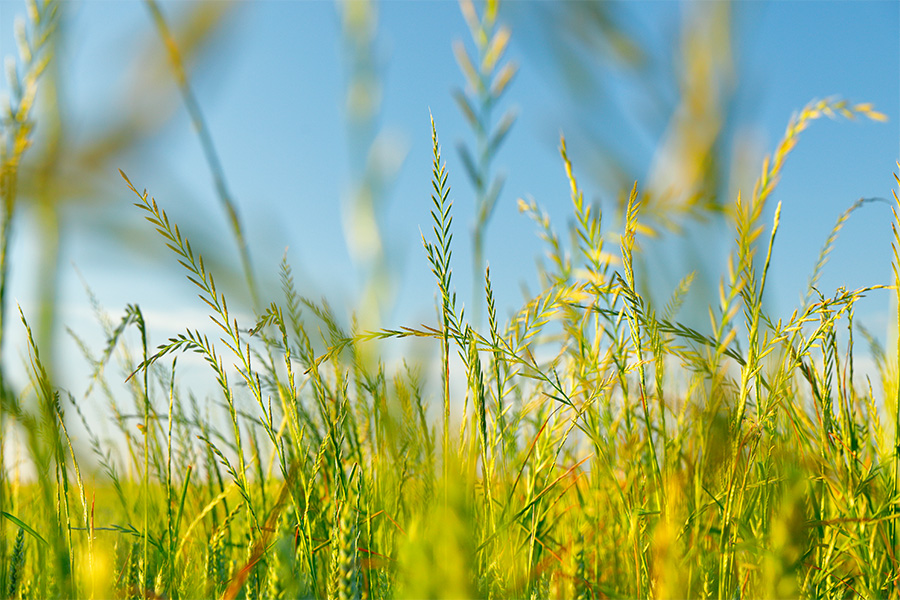Crop and Soil Sciences
-

This research report presents the results of the 2017 statewide performance tests of soybean, sorghum grain and silage, and summer annual forages. The tests for various evaluations were conducted at several or all of the following locations: Tifton, Plains, and Midville in the Coastal Plain region; Griffin and Athens in the Piedmont region; and Calhoun in the Limestone Valley region.
Dustin G Dunn, Henry Jordan, and Daniel J Mailhot
|
-

This research report presents the results of the 2018 statewide performance tests of soybean, sorghum grain and silage, and summer annual forages. The tests for various evaluations were conducted at several or all of the following locations: Tifton, Plains, and Midville in the Coastal Plain region; Griffin and Athens in the Piedmont region; and Calhoun in the Limestone Valley region.
Dustin G Dunn, Henry Jordan, and Daniel J Mailhot
|
-

Legume species add significantly to forage systems in Georgia. They are an excellent source of high quality forage, and are generally very digestible and contain high levels of crude protein (CP). Many legumes also provide substantial forage yields. Perhaps most importantly, legumes and the rhizobium bacteria that colonize nodules on their roots provide an important source of biologically-fixed nitrogen (N). This publication presents information about the most important legume species grown for forage in Georgia.
Steve Morgan, Dennis Hancock, Randy W. Franks, and Ray Hicks
|
-

The geographic and environmental diversity of Georgia allows for the extensive use of both cool and warm season grass species. In general, cool season grass species provide higher nutritional quality than warm season grasses. In contrast, warm season grasses generally yield more than cool season grasses. Each type and species, however, offers its own unique qualities and benefits to the forage system. In this section, the most important grass species in Georgia are introduced and discussed.
Dennis Hancock, Jeremy Kichler, Ray Hicks, and Bobby Smith
|
-

This is a biennial publication containing the proceedings of the turfgrass field day carried out at the UGA Griffin campus every other year. The guide provides professionals with continuous, real-time access to the latest up-to-date information about turfgrass research studies, products, and turfgrass Extension activities, programs, and outreach. Topics will include, but are not limited to, crop and soil science, agronomy, weed science, plant pathology, entomology, economics, tissue culture, urban agriculture, irrigation, and student posters.
Shimat V. Joseph and David Jespersen
|
-

B 1499
Haiti Peanut Research Report
This report summarizes the findings of field trials and basic data collected in Haiti under the Feed the Future Peanut & Mycotoxin Innovation Lab project from 2014-2017. The focus of the research was to improve peanut productivity through management options for foliar diseases, low soil fertility, and other yield-limiting agronomic factors.
French translation:
https://extension.uga.edu/publications/detail.html?number=B1499-FR”>https://extension.uga.edu/publications/detail.html?number=B1499-FRTimothy Branner Brenneman, Robert C Kemerait Jr, and Jamie Rhoads
|
-

Drip, trickle, microemitters, and subsurface irrigation systems are considered low-volume irrigation. Low-volume irrigation systems are designed to improve irrigation efficiency, delivering water to the crop accurately with minimal water loss. Irrigation efficiency can be categorized into two main concepts: water loss and uniform application. If water loss is significant, or application uniformity is poor, efficiency will be low. Generally, the most significant loss of irrigation water is from overwatering, where the water percolates below the root zone, or from runoff. With good management, losses due to leaks, system drainage, and flushing of filters and lateral lines should not exceed 1%. Low-volume systems have the opportunity to achieve efficiency, and under careful management, will minimize losses from overirrigation. However, using low-volume systems requires increased irrigation frequency and soil moisture monitoring should be used to improve water-use efficiency. This publication covers system design, system efficiencies, components, chemical applications, diseases related to irrigation, and soil moisture monitoring.
Wesley Porter, Jonathan E. Oliver, and Erick Smith
|
-

This report includes results of the 2017-2018 performance tests of small grains used for grain and forage. Grain evaluation studies were conducted in five locations in Georgia, including Tifton, Plains, and Midville in the Coastal Plain region; Athens in the Piedmont region; and Calhoun in the Limestone Valley region. Small grain forage evaluation tests were conducted at five locations in Georgia and Florida, including Tifton and Plains in the Coastal Plain region, Athens in the Piedmont region, Calhoun in the Limestone Valley region, and at Marianna, Florida.
Daniel J Mailhot
|
-

Cover crops are in essential part of an organic production system. Cereal rye and crimson clover are cover crops that are commonly used. If organic cover crop production is a viable enterprise for growers, it could improve the availability of varieties adapted to the Southeast; provide a source for locally grown seeds; and be another profit center for growers, seed cleaners, and local seed companies.
This bulletin discusses what farmers need to know about producing cover crops organically and gives example enterprise budgets for cereal rye and crimson clover. A two-year on-farm trial indicated that producing organic cover crop seed may be profitable.
Julia W. Gaskin, Amanda R Smith, and Ray Hicks
|